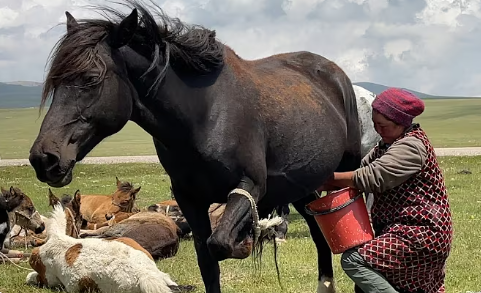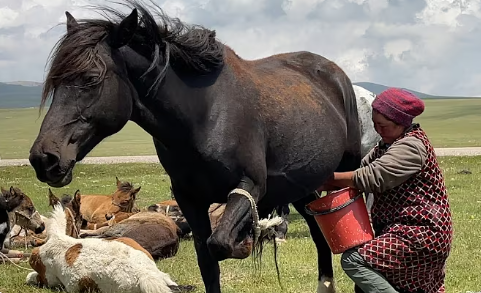Ancient Nomad Life in the High Mountains
In the remote and breathtaking highlands of Central Asia, a unique and ancient tradition continues to thrive—horse milking, a practice passed down through generations of nomadic families. While it might be a rare sight in the modern world, this time-honored method of gathering sustenance reveals a rich cultural heritage rooted in survival, reverence for animals, and deep knowledge of the land.
A Glimpse Into Nomadic Traditions
Nomadic life in the high mountains is not for the faint of heart. It demands resilience, adaptation, and a harmonious relationship with nature. For centuries, nomadic herders have relied on their animals not just for transportation, but for food, drink, clothing, and companionship. Among their most valued animals are horses—not only symbols of freedom and pride but vital providers of mare’s milk, known locally as airag or kumis.

Horse milking is a daily ritual in the summer months when mares produce milk after giving birth. The milk is collected and often fermented into kumis, a lightly alcoholic, slightly sour beverage rich in probiotics and believed to have numerous health benefits. It is a staple in many nomadic diets and holds ceremonial value during community gatherings and festivals.
The Horse and the Herder: A Sacred Bond
The process of milking a horse is delicate and requires trust between the herder and the animal. Unlike cows, mares must be gently restrained, often with the foal nearby to encourage milk flow. In the image above, a nomadic woman is seen kneeling beside a black mare, calmly extracting the milk into a red pail. Her hands move with practiced ease, a silent testament to years of experience and care.
Around her, goats and young foals rest peacefully—an everyday scene that captures the balance of work, calm, and coexistence that defines nomadic herding life. The open grasslands stretch into the distance, framed by rolling hills and dramatic skies. This is their world: vast, rugged, and alive.
More Than a Tradition – A Way of Life
For nomads, horse milking is more than a means to produce food—it is a way of life that connects them to their ancestors, their land, and each other. Despite modern advancements and urban migration, many families choose to maintain this lifestyle, keeping their traditions alive in the face of change.
In recent years, horse milking has drawn interest from travelers and anthropologists alike, intrigued by its cultural significance and the resilience of those who practice it. As global awareness of ancient traditions grows, so does appreciation for the skill, harmony, and history embedded in this unique practice.
Final Thoughts
Horse milking in the high mountains is a vivid reminder that not all treasures are found in cities or screens. Sometimes, they are hidden in the rhythm of nature, the wisdom of elders, and the quiet strength of traditions that refuse to fade.
